Adjacent angles need to share a side and a ....
Vertex.
Note: A vertex is a fancy word for corner.
How many angles are needed to create complementary angles?
TWO
Note: A complementary angle is 2 or more angles that add up to 90 degrees.
True or false: Supplementary angles must be adjacent (touching)
False. Supplemtary angles have to add to 180. They do NOT have to touch.
Any 2 or more angles that add up to 180 degrees are supplementary.
Vertical angles are opposite and their angle measures are
Equal
Vertical angles are across from each other and always equal.
Name the angle that measures 90 degrees.
Right
All right angles equal 90 degrees.
Is a triangle with side lengths 7, 8, 9 possible. Explain why or why not?
Yes. Because 7 + 8 = 15 and 15 > 9
The sum of the 2 smaller sides must be greater than the larger side.
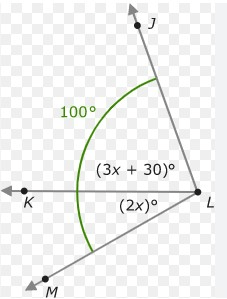
What is x equal to?
14
2x + 3x + 30 = 100
5x -30 -30
5x = 70
/5 /5
x = 14
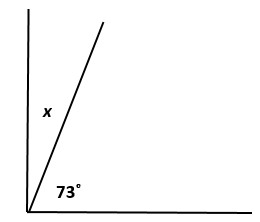 If the two angles are complementary, what is the value of x?
If the two angles are complementary, what is the value of x?
17
Complementary angles are 90 degrees
x + 73 = 90
-73 -73
x = 17
If two angles are supplementary and one angle is 30 degrees, what is the other angle?
150
Supplementary angles add to 180 degrees
so 180 - 30 = 150
What are the measures of Vertical angles that are complementary
45 degrees,and 45 degrees
Complementary angles add to 90 degrees and vertical angles are equal.
so 2x = 90
x = 45
Name a triangle that has 2 sides the same length.
Isosceles
Isosceles is a triangle that has 2 sides of the same length.
Is a triangle with angles 30, 45, 130 possible? Explain why or why not.
No because 30 + 45 + 130 does not equal 180
All angles must add up to 180 degrees in a triangle.
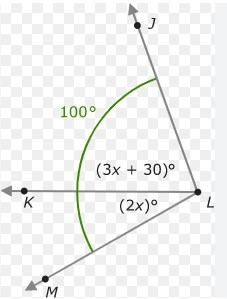
What is <KLJ equal to?
72 degrees
2x + 3x + 30 = 100
5x + 30 = 100
5x = 70
x = 14
3x + 30
3 * 14 + 30
= 72

Given the right angle shown, what is the value of x?
17
Right angles are 90 degrees
3x + 15 + x + 7 = 90 Note: x is 1x
4x + 22 = 90
4x = 68
x = 17
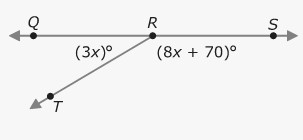
Solve for x.
10
Straight lines are 180 degrees
3x + 8x + 70 = 180
11x + 70 = 180
11x = 110
x = 10
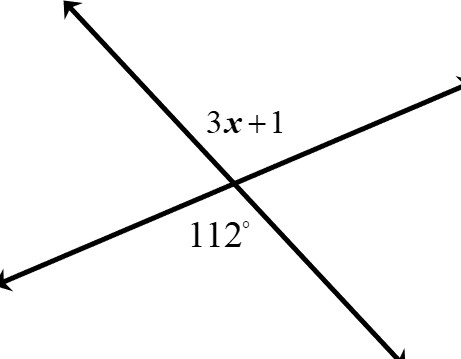
What is the value of x?
37
3x + 1 = 112
3x = 111
x = 37
What is a triangle with a 128 degree angle that has no sides the same length?
Scalene Obtuse
128 degrees is obtuse making it an obtuse triangle
No sides the same length makes it scalene
So the triangle is scalene obtuse
A triangle has angles measuring 73 and 42. what is the third angle?
65
73 + 42 + x = 180
115 + x = 180
x = 65

What is the value of x, given <GEM is equal to 172.5?
x = 33.1
3x + 7 + 2x = 172.5
5x + 7 = 172.5
5x = 165.5
x = 33.1
The complementary angle for a 10 degree angle is..
80 degrees
Complementary angles are 90 degrees so 90 - 10 = 80

Solve for x
61
2x + 3 + x - 6 = 180
3x - 3 =180
3x = 183
x = 61
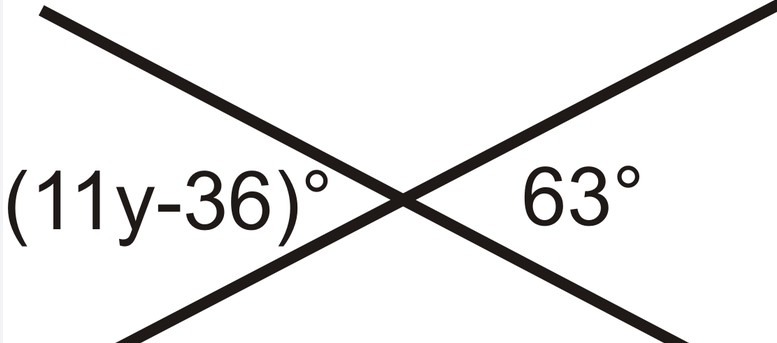
What is the value of y?
9
11y - 36 = 63
11y = 99
y = 9
Name a triangle with side lengths 3,4,5 and angles 30,60,90
right scalene
Any triangle that has 90 degrees is a right triangle
If the sides are all different lengths then it is scalene.
A triangle has side lengths of 4 and 2. What is the biggest possible third side?
The third side must be less than 6.
The sum of the 2 smaller sides must be bigger than the third side.

What is <GET if <GEM is equal to 162.5
100.3
3x + 7 + 2x = 162.5
5x + 7 = 162.5
5x = 155.5
x = 31.1
GET is 3x + 7
3 * 31.1 + 7
GET = 100.3
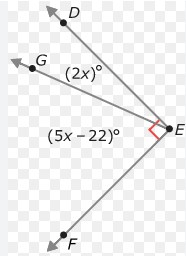
What is <FEG equal to?
58
The red square means 90 degrees.
5x - 22 + 2x = 90
7x - 22 = 90
7x = 112
x = 16
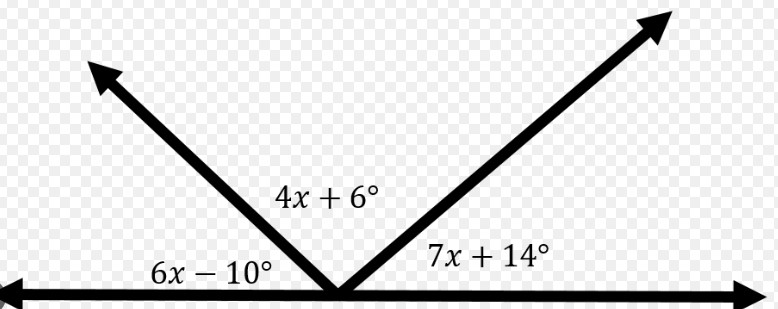
Solve for x
10
Straight lines are 180 degrees
6x - 10 + 4x + 6 + 7x + 14 = 180
17x + 10 = 180
17x = 170
x = 10
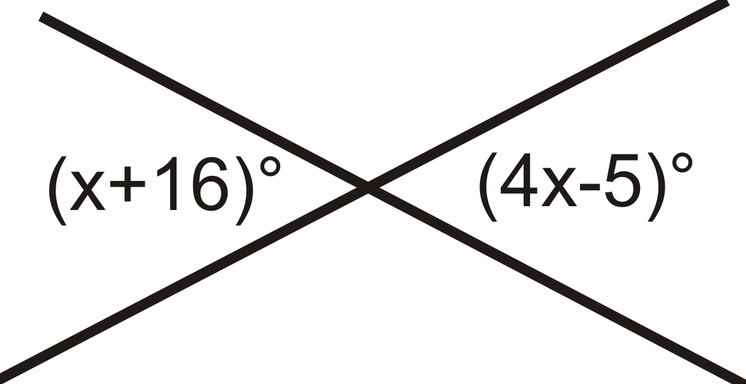
7
x + 16 = 4x - 5
-x -x
16 = 3x - 5
21 = 3x
x = 7
What are the units that angles are measured by?
Degrees
All angle measurements are in degrees.
What is the difference between a theory and a theorem?
Theory's are ideas based on evidence used in science.
Theorems are rules proved in math based on evidence/conditions.
Theories can be disproved. Theorems are facts.